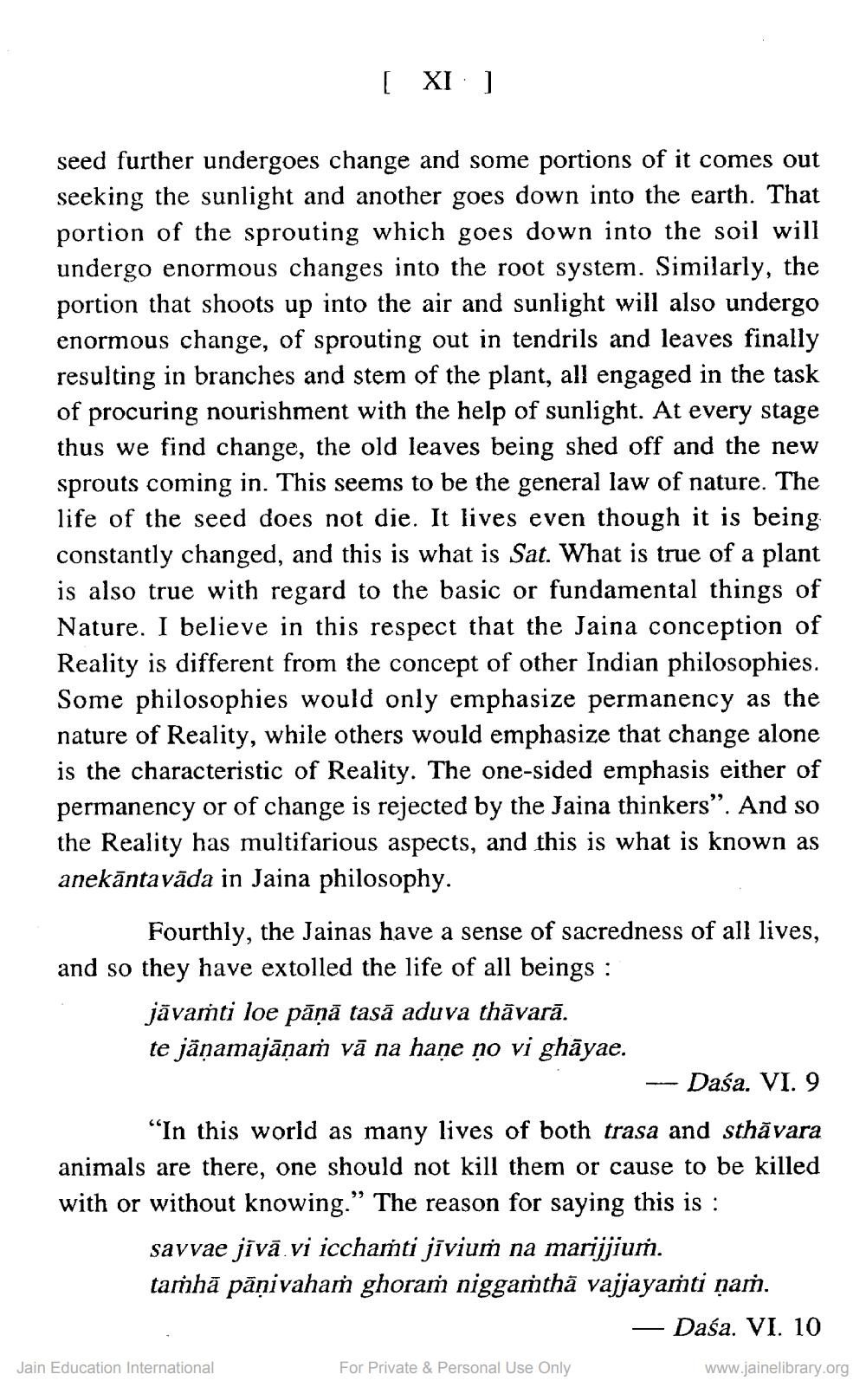________________
[
XI]
seed further undergoes change and some portions of it comes out seeking the sunlight and another goes down into the earth. That portion of the sprouting which goes down into the soil will undergo enormous changes into the root system. Similarly, the portion that shoots up into the air and sunlight will also undergo enormous change, of sprouting out in tendrils and leaves finally resulting in branches and stem of the plant, all engaged in the task of procuring nourishment with the help of sunlight. At every stage thus we find change, the old leaves being shed off and the new sprouts coming in. This seems to be the general law of nature. The life of the seed does not die. It lives even though it is being constantly changed, and this is what is Sat. What is true of a plant is also true with regard to the basic or fundamental things of Nature. I believe in this respect that the Jaina conception of Reality is different from the concept of other Indian philosophies. Some philosophies would only emphasize permanency as the nature of Reality, while others would emphasize that change alone is the characteristic of Reality. The one-sided emphasis either of permanency or of change is rejected by the Jaina thinkers”. And so the Reality has multifarious aspects, and this is what is known as anekāntavāda in Jaina philosophy.
Fourthly, the Jainas have a sense of sacredness of all lives, and so they have extolled the life of all beings :
jāvamti loe pāņā tasā aduva thāvarā. te jäņamajāņam vā na hane ņo vi ghāyae.
--- Daśa. VI. 9 “In this world as many lives of both trasa and sthăvara animals are there, one should not kill them or cause to be killed with or without knowing.” The reason for saying this is :
savvae jivā vi icchamti jīvium na marijjiuṁ. taṁhā pāņivaham ghoraṁ niggamthā vajjayarti ņam.
— Daśa. VI. 10
Jain Education International
For Private & Personal Use Only
www.jainelibrary.org




